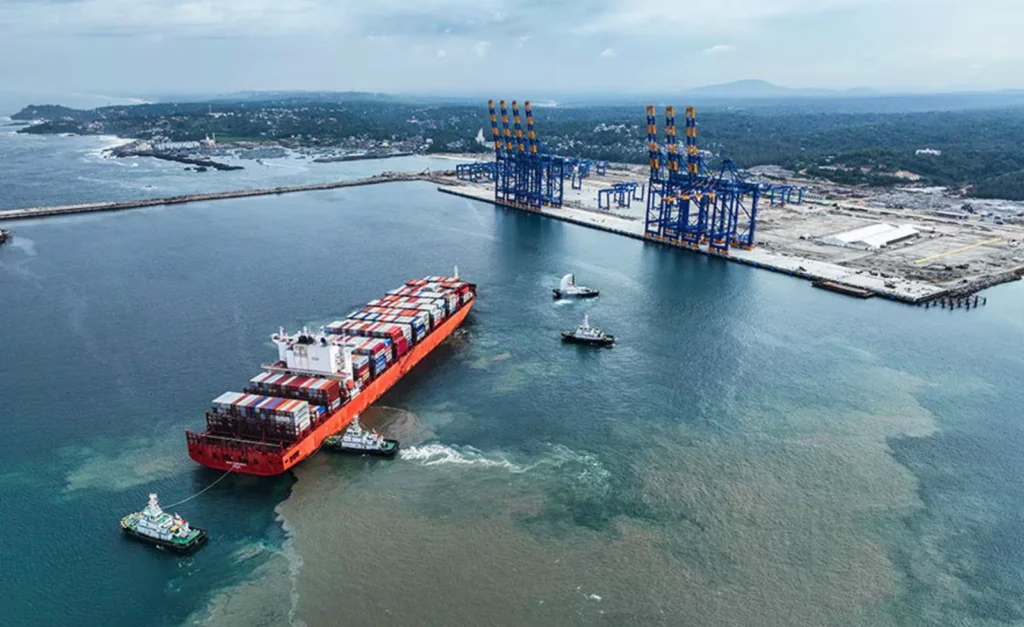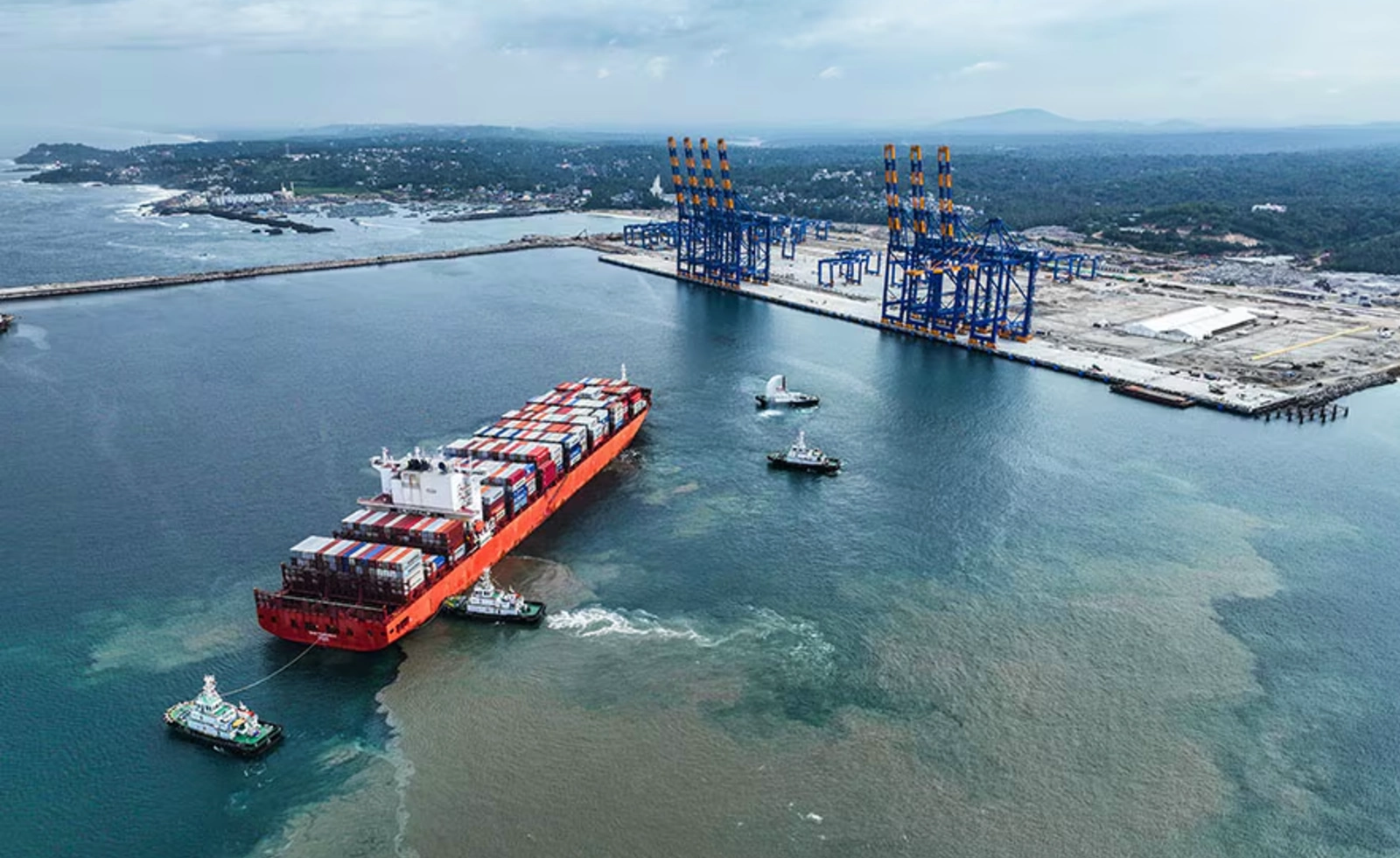Vizhinjam Port and the Future of Logistics: New Opportunities in India's Maritime Trade
India is on the cusp of a maritime transformation, and at the center of this evolution lies the Vizhinjam International Seaport, a deep-water, all-weather port located in Kerala. Envisioned as India’s new maritime gateway, Vizhinjam is not just another infrastructure project, it’s a strategic play in the global logistics and trade arena.
As India’s economy becomes increasingly integrated with international supply chains, the role of advanced logistics infrastructure becomes vital. Efficient ports are the cornerstone of this transformation, influencing trade dynamics, reducing logistical costs, and enhancing competitiveness.
For logistics companies, EXIM (export-import) traders, and infrastructure investors, Vizhinjam represents a golden opportunity, one that could reshape cargo movement across South Asia and redefine India’s global trade role.

Vizhinjam at a Glance: A Strategic Maritime Infrastructure Milestone
Situated in Thiruvananthapuram, the Vizhinjam Port is strategically designed to become India’s first mega transshipment hub. What sets it apart is its natural depth (over 20 meters) and its proximity, just 10 nautical miles, to the international east-west shipping route.
- Location Advantage: Southern tip of the Indian subcontinent, with direct access to global shipping lanes.
- Cargo Handling Target: Initial capacity of over 1 million TEUs (Twenty-Foot Equivalent Units) with scalable infrastructure to handle much higher volumes in the future.
- Developer: Adani Ports and SEZ Ltd, with government partnership under a Public-Private Partnership (PPP) model
Positioning India on the Global Logistics Map
Strategic Importance for Indian and Global Logistics
Vizhinjam is uniquely poised to reduce voyage times, enhance trade competitiveness, and divert transshipment cargo currently routed through Colombo, Singapore, and Dubai back to Indian shores.
- Handles Ultra Large Container Vessels (ULCVs): Its deep draft and world-class infrastructure can accommodate some of the largest container ships in operation.
- Direct Access to Major Trade Routes: Cutting transit time and cost for ships traveling between Asia, the Middle East, Africa, and Europe.
- Less Dependency on Foreign Ports: Reduces outflow of foreign exchange spent on transshipment in other countries.
- Southern India Connectivity: Enhances logistics and EXIM access for Tamil Nadu, Kerala, and Karnataka, regions rich in manufacturing and agricultural produce.
- Boosts India’s Global Supply Chain Integration: Offers potential as a critical node in global maritime corridors and supply chains.
A Logistics Ecosystem Around Vizhinjam
Emerging Logistics Opportunities
As Vizhinjam evolves into a bustling port, an entire logistics ecosystem is expected to emerge around it, creating diverse business opportunities and jobs across the value chain.
More importantly, this port has the potential to act as a game-changer in logistics and supply chain management, unlocking new levels of efficiency, cost-effectiveness, and global competitiveness for Indian businesses. From cargo consolidation to last-mile delivery, Vizhinjam can become the nucleus for integrated, tech-enabled logistics networks across the southern peninsula.
- Transshipment Hub Potential
India is transitioning from a transshipment-dependent nation to a self-reliant logistics powerhouse. Establishing transshipment hubs enables cargo aggregation and redistribution, effectively reducing congestion at other Indian ports and enhancing the country’s maritime competitiveness.
- Container Freight Stations (CFS) & Inland Container Depots (ICDs)
The development of CFS and ICDs offers significant opportunities for private logistics operators to establish warehousing, distribution, and value-added processing services. These facilities play a crucial role in driving regional industrial development and enhancing MSME export capabilities.
- Multimodal Connectivity Development
Robust road and rail linkages are being planned, with future provisions for air cargo integration. This multimodal connectivity is vital for supporting cold chain logistics, agri-export corridors, and last-mile delivery networks, ensuring efficient and resilient supply chains.
- Marine and Port Services
Port operations are expected to stimulate demand for various marine and support services, including:
- Tug and barge services
- Bunkering and pilotage
- Ship repair and dry dock facilities
- Maritime logistics support businesses
- Logistics Parks and Industrial Clusters
The growth of logistics parks and industrial clusters aligns with national initiatives like the Kerala Industrial Corridor, National Logistics Policy, and PM Gati Shakti Plan. This development will boost logistics operations in key sectors such as FMCG, automotive, e-commerce, and pharmaceuticals.
- Boost for EXIM Logistics
Enhanced port infrastructure and connectivity will significantly reduce time and costs for exporters and importers across southern India. It also opens up new opportunities for:
- Freight forwarding firms
- Customs brokerage services
- Supply chain technology platforms
- Third-party (3PL) and fourth-party (4PL) logistics providers
Vizhinjam: More Than a Port – It’s India’s Logistics Future
Vizhinjam is not merely a port, it is a bold statement of India’s intent to lead in global trade and logistics. Strategically located and built for scale, Vizhinjam is set to transform the way cargo is handled, shipped, and tracked across the country. As operations expand and infrastructure advances, the port will serve as a powerful catalyst for economic growth, driving efficiency in manufacturing, retail, e-commerce, and agriculture. It will not only ease trade bottlenecks but also attract foreign investments and unlock new opportunities for regional development, particularly in Kerala. With the right blend of forward-looking policies, private sector collaboration, and smart technology integration, Vizhinjam can emerge as a world-class maritime hub and a cornerstone in India’s vision of becoming a $5 trillion economy.



